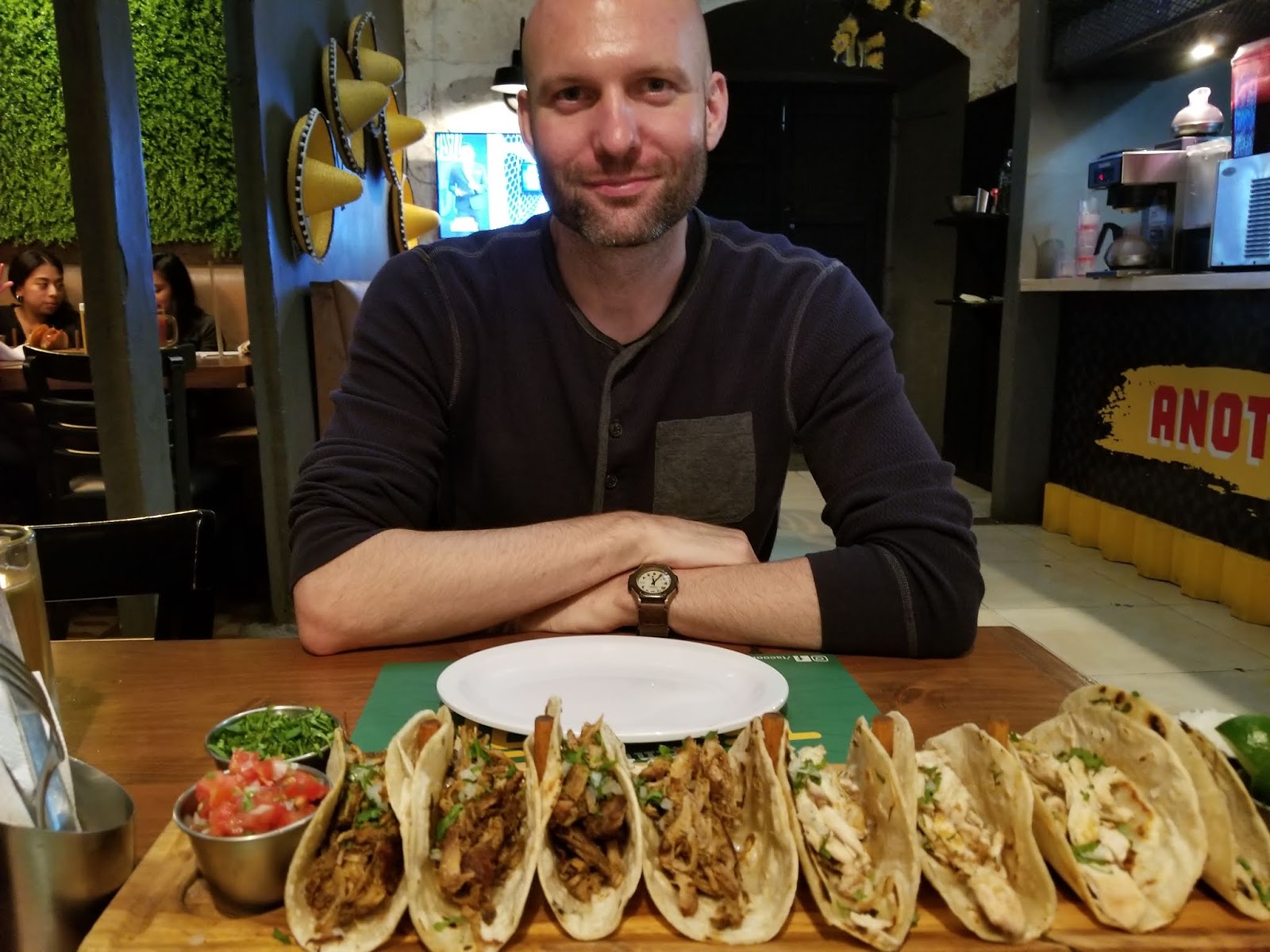Guatemala Travel Costs
Fifty dollars a day. That’s what our research told us a
trip around the world should cost. Many people have done it for less and, of
course, it’s not hard to spend more. Over a year that comes to roughly $18,000.
That’s less than I spent on my car and is supposed to cover the entirety of one’s
travel and living expenses for a year.
I feel a bit strange talking about our finances knowing that
others are reading this, but I know we’ll be curious in the future to look back and
see what this trip cost us, so we’ve been keeping track of all our expenses.
 |
| Tacos for two in Antigua. |
To be clear, we don’t have a strictly-defined budget for this trip. Part of the reason is that our goal isn’t to travel as long as possible, it’s to have an enjoyable trip. I would rather spend eight months living comfortably than a year scrutinizing every expense. Also, at $50 per day per person, that assumes that you’re always using the least expensive option for everything. This may have been fine when I was in college, but at this point in our lives we have certain comforts that we’re accustomed to. We’re way past sharing a dorm room with a dozen strangers. And given a choice between a 16-hour bus ride or a 45-minute flight… we’ll pay the extra for the flight. Many national parks and ruins may cost $50 or more for entry, but I didn’t travel half way across the world to not see them. For the two of us, $100 per day is more of a guide post than a budget. We’re spending the money that we think we should, but we’re also keeping track of it so we can adjust our spending if necessary.
 |
| The most comfortable, but not the most affordable, transportation to Tikal. |
Below is a summary of all our expenses while in Guatemala, for
the both of us, including our flights there from the US. I think we’re doing surprisingly
well, considering that this includes two weeks of Spanish classes. If you exclude the Spanish classes, we’re at roughly $115 per
day, close to our $100 per day guide post. The Spanish classes fall into a special category for us. There are some
travel and educational expenses that would make us go way over our budget but
we acknowledge that these are extra expenses that we may occasionally
choose to incur. These and future Spanish classes fall into this category, as
do more exotic travel destinations, like the Galapagos Islands, Antarctica, or trekking to far off Inca ruins around Peru, for instance. These are things that we know will cost significantly
more than $50 per day, but we’re keeping an eye on them and will have to decide
if they are worth the extra cost.
Transportation:
Includes our one-way flights from the US to Guatemala. We also chose to fly
from Guatemala City to Tikal and back, rather than the two overnight bus trips
we would have otherwise needed to take.
Accommodations:
For one week our homestay also included all our meals. For other accommodations we've used Airbnb almost exclusively.
Spanish School:
20 hours of 1-on-1 Spanish lessons for a week was $178 per person and really quite a
bargain.
Restaurants: For lunch or dinner. Most accommodations provided breakfast or if not we got by with a cup of coffee and some yogurt.
Tourism:
Anytime we spent money on touristy things, like our guided hike of Volcan
Pacaya or entry tickets to Tikal.
Drinks: When
we went out to spend money exclusively on beverages. We drank a LOT of coffee, a
beer in the afternoon or evening, and the occasional fruit smoothie.
Grocery:
Anytime we went to the grocery store. Anything from food to sun screen.
Other: We got
a SIM card and a cell phone plan.
Considering that we spent as if we were on any other
vacation I think we did really well. It also tells us that our transportation and
accommodation costs shouldn’t be underestimated as they accounted for over half
of our expenses. Our most expensive activities were Spanish school and our trip
to Tikal, but both were absolutely worth it.
 |
| Afternoon beverages in San Pedro. Travis had a Moza, arguably the best beer in Guatemala, and I had a fruit smoothie. |
However, Guatemala may be one of the least expensive countries in Central America, so we’ll see how we do at future, more expensive, destinations. But now that we know where our money went this past month I think we're in much better shape to gauge our future spending.



Comments
Post a Comment